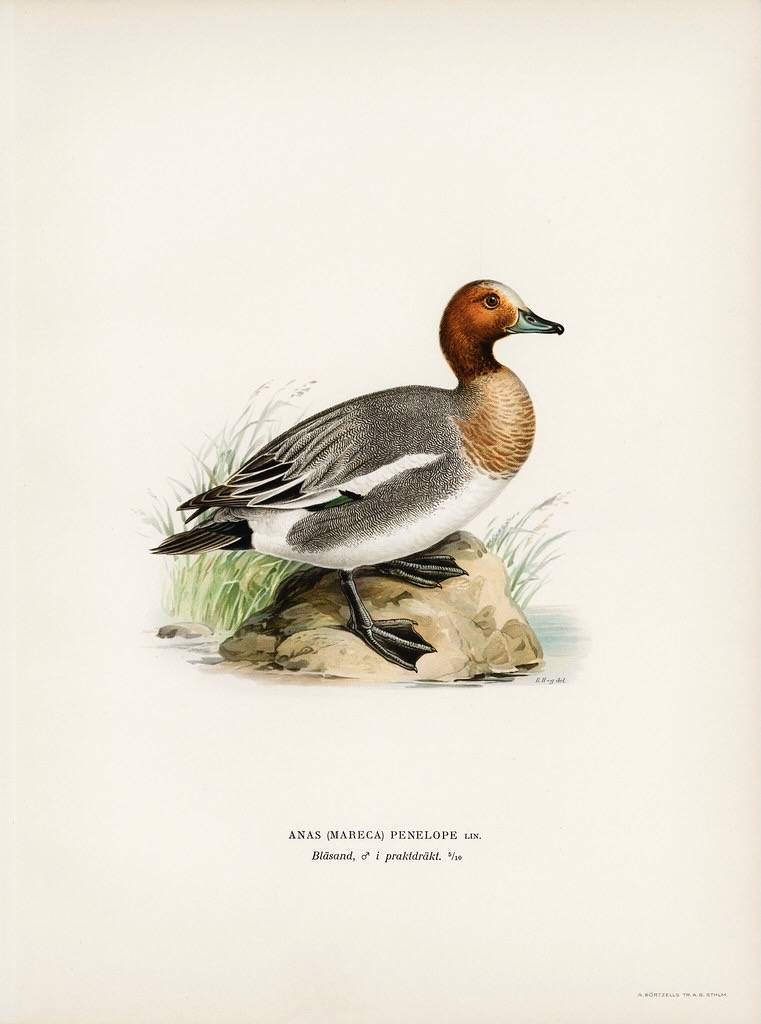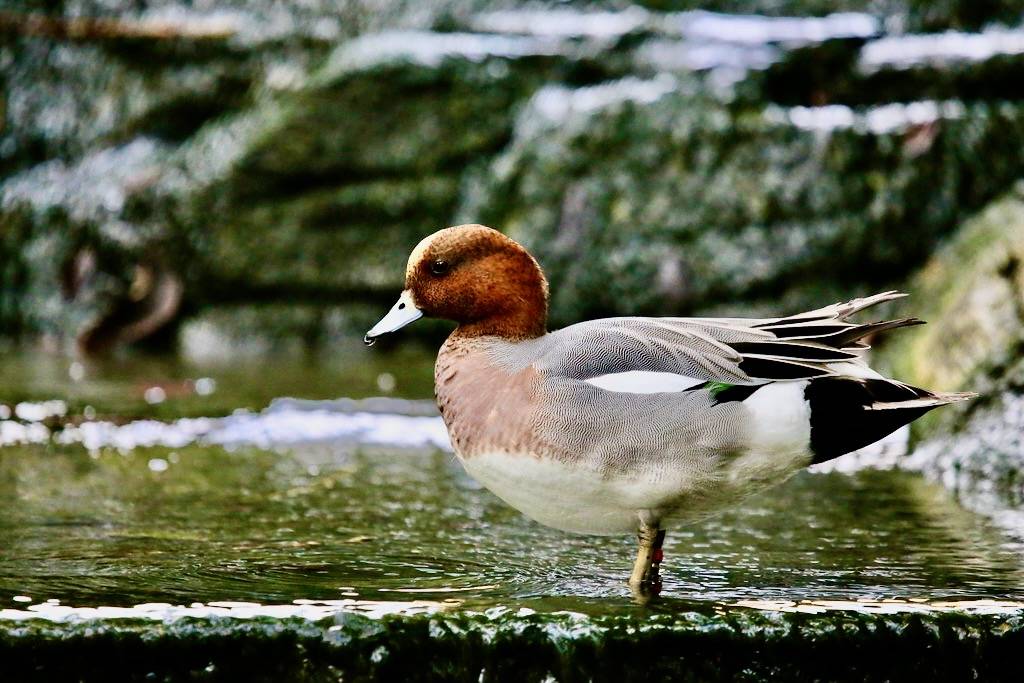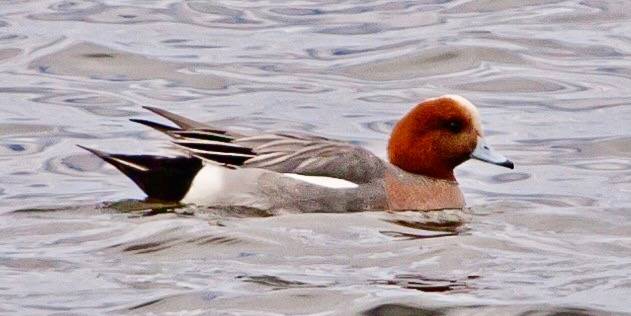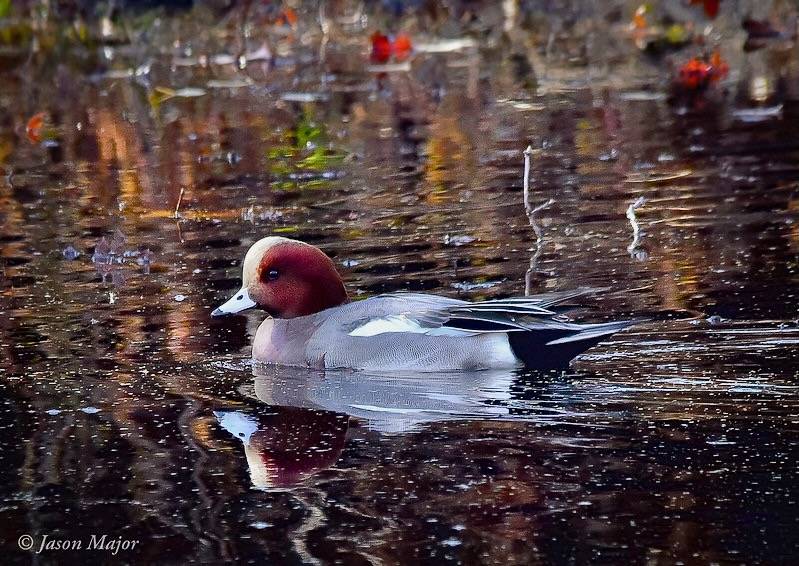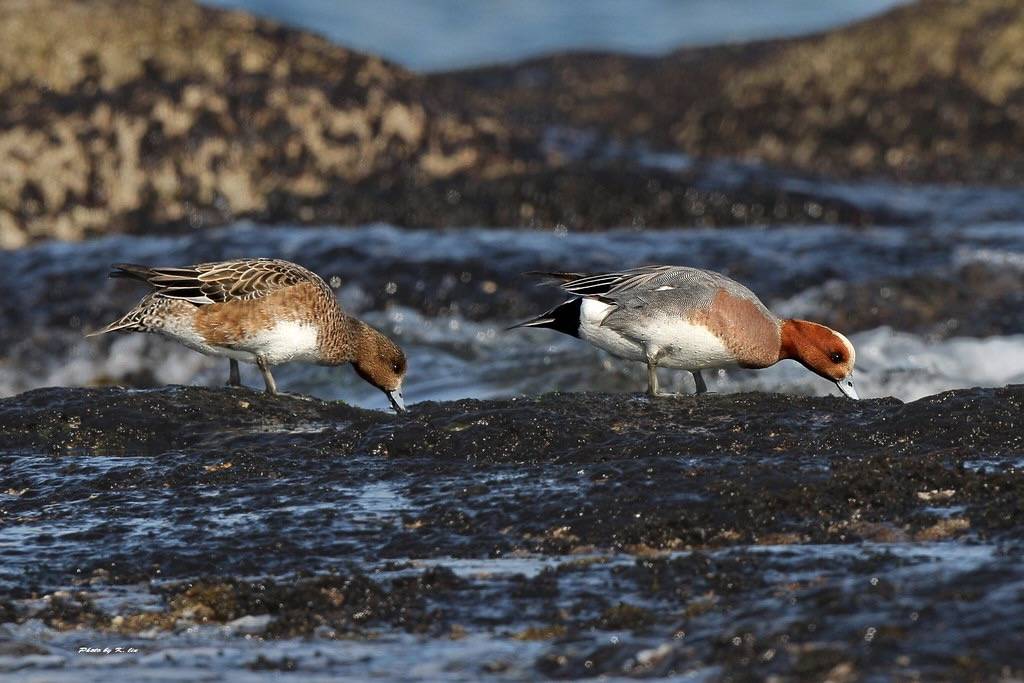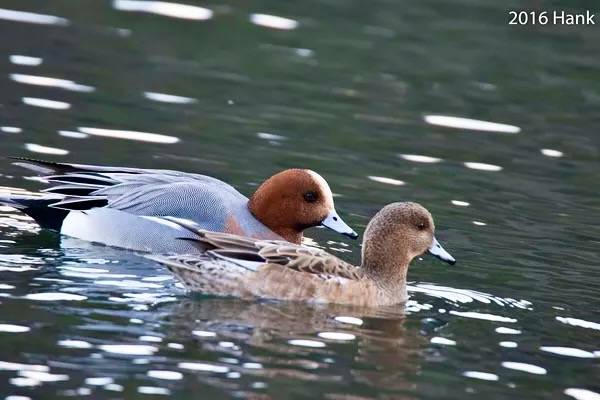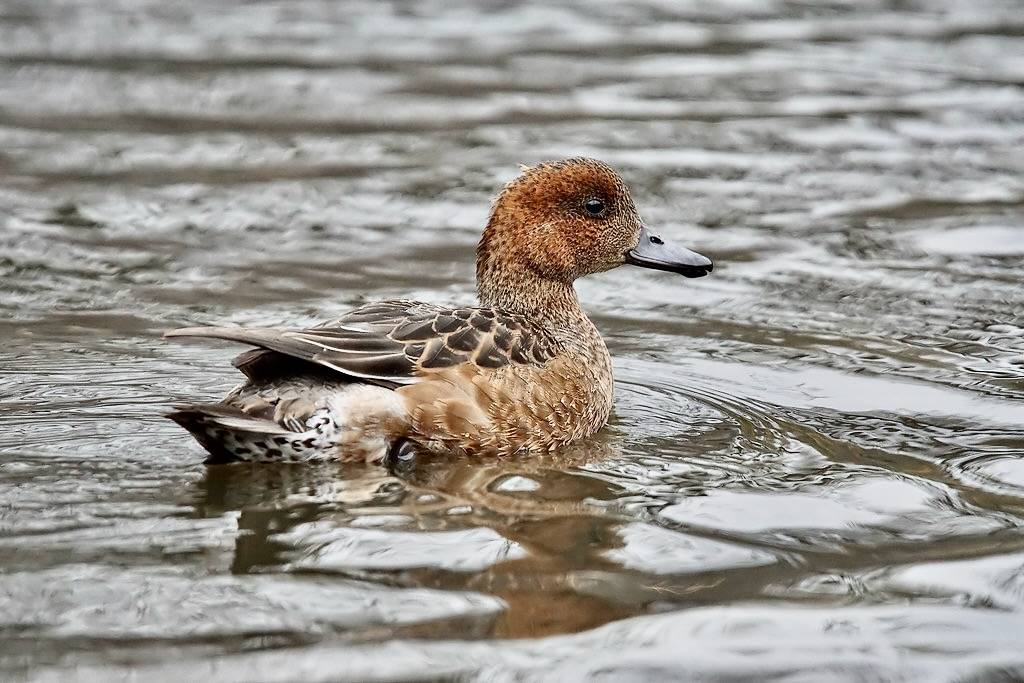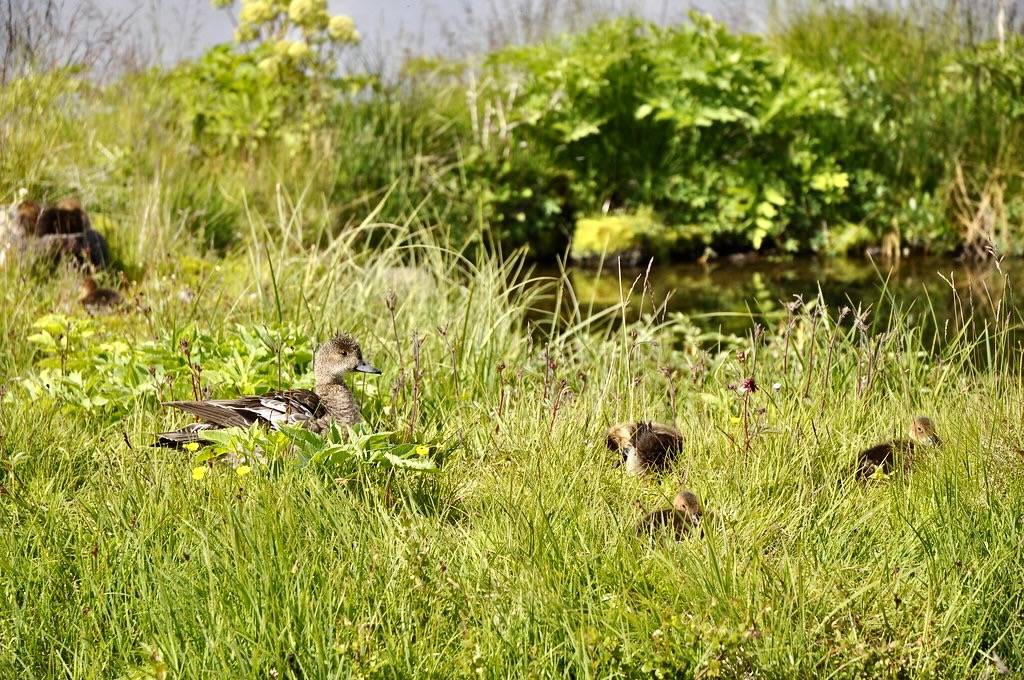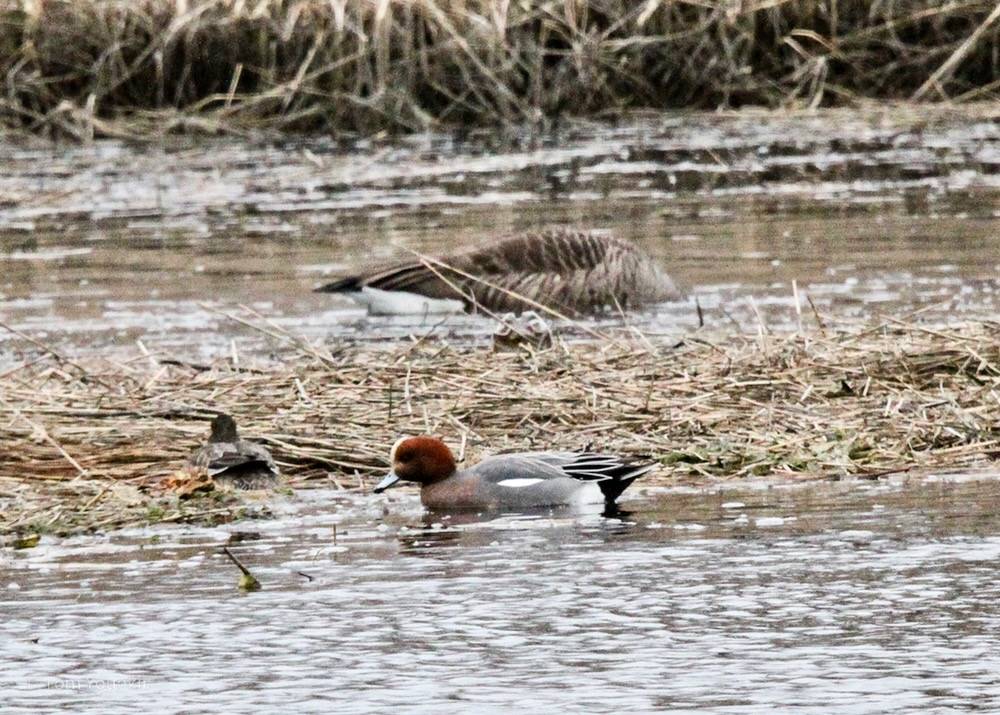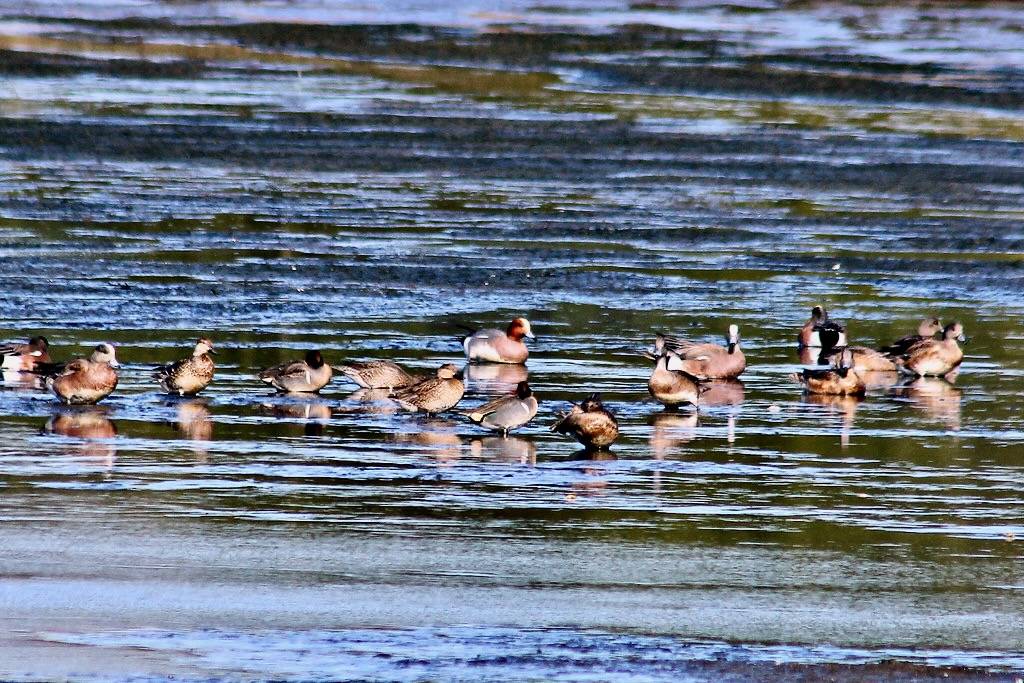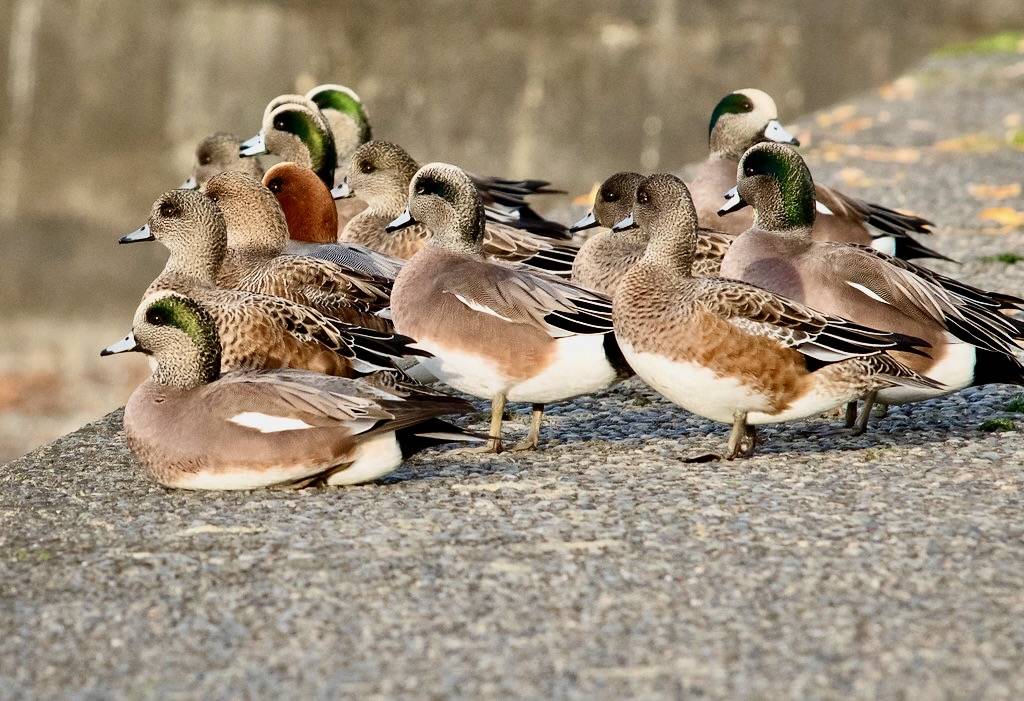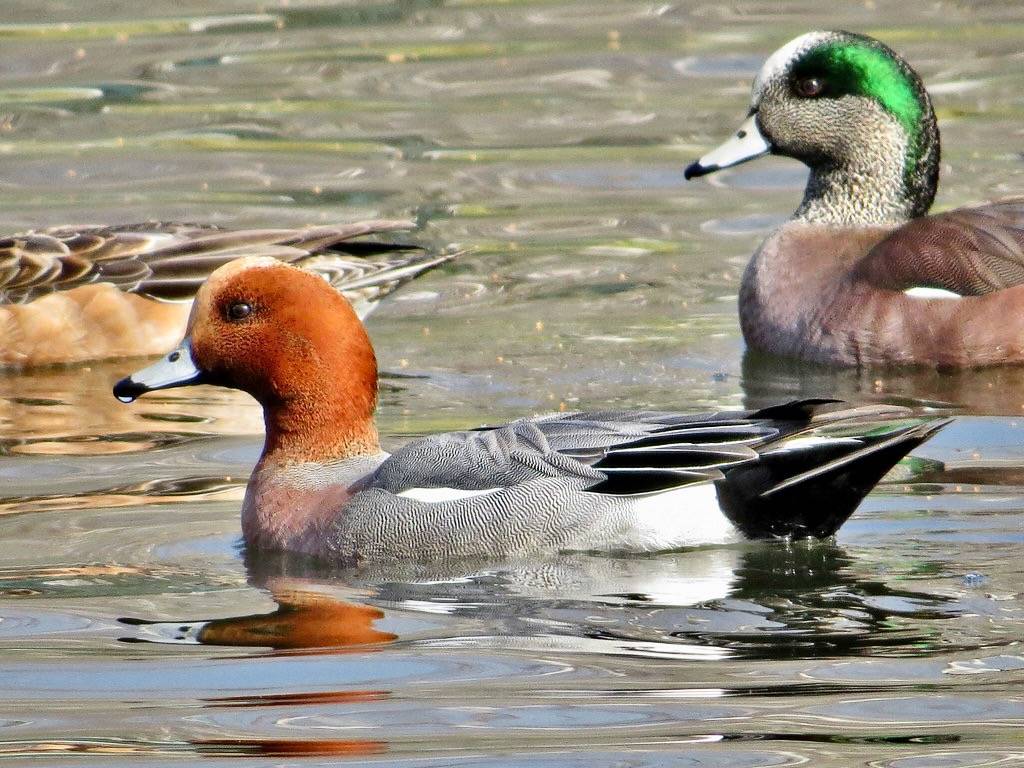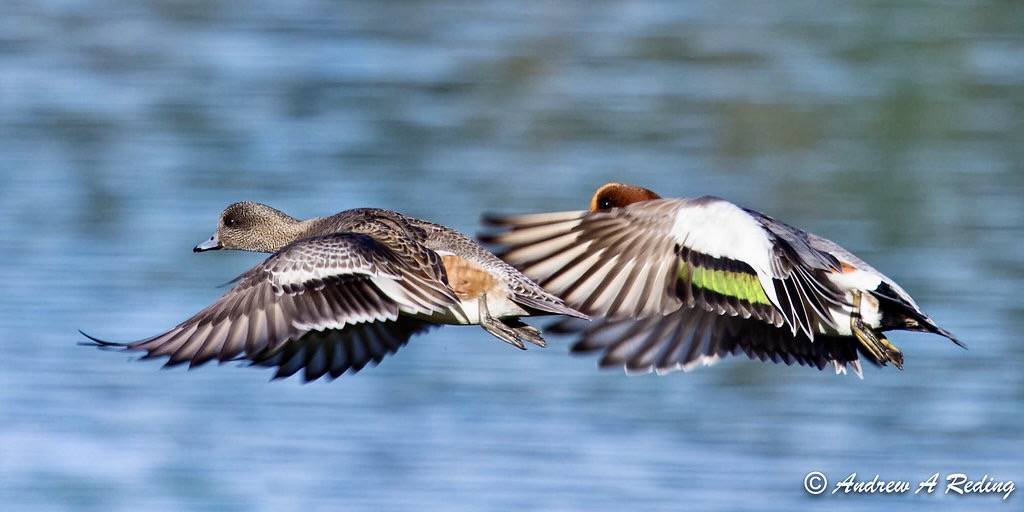Eurasian Wigeon
The Eurasian Wigeon, a duck that nests in the northern regions of the Palearctic, has been a rare winter visitor to Salter Grove. It was first seen in 2012 and then again in 2019, both times in April but by different observers. Extrapolating from information collected in banding studies, the individuals seen in the park were likely from Iceland.
In North America, the Asian Wigeon is most often found in the company of American Wigeons, its nearest relative. Males of the two species are easily distinguished. The Eurasian Wigeon male has a rufous-brown head and buffy forehead whereas the American Wigeon has a gray head with a brilliant green mask and contrasty white forehead. When hybrids occur, plumage of the male offspring is intermediate between the two parental species.
Females of both species are a bit more difficult to tell apart if they are not paired with males. A female American Wigeon has a more scaly-looking head and a strip of black at the base of the bill. The female European Wigeon has a more uniformly brown head and lacks the strip of black at the base of the bill.
Both Wigeons are dabblers, feeding on stems and leaves of aquatic vegetation year-round. Both species prefer to breed in northern wetlands where females supplement their plant diet with aquatic invertebrates to provide the protein needed for laying the large clutches of 6-12 eggs.
During the winter, both species can be found feeding on waste grain in wet farm fields, or on vegetation in freshwater marshes, estuaries, and sheltered coastal water.
For more information:
https://www.allaboutbirds.org/guide/Eurasian_Wigeon
https://www.audubon.org/field-guide/bird/eurasian-wigeon
https://en.wikipedia.org/wiki/Eurasian_wigeon
http://www.birdfellow.com/journal/2009/03/26/separating_female_wigeon_a_little_known_field_mark
http://retiringwithlisadeleon.blogspot.com/2013/02/the-wigeons-in-newfoundland.html

